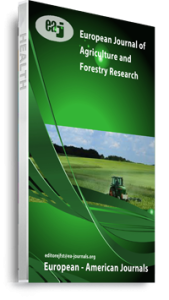Over half a billion people in Sub-Saharan Africa and Asia utilize sorghum as a staple food. It grows in semi-arid to desert environments around the world. Grain sorghum’s adaptation to a wide range of environmental conditions has resulted in the evolution and existence of considerable sorghum genetic polymorphism for drought tolerance. As a result, sorghum is expected to play an increasingly important role in agriculture and meeting global food demand in the face of climate change, land degradation, and increased water shortages. Drought is a complicated phenomenon that affects agricultural production all around the world. It is the world’s largest sorghum production constraint, resulting in high yield losses every year. Plant breeders continue to face challenges despite decades of research. To reduce the negative effects of drought and boost production, it is vital for breeding to underestimate the genetics and physiological systems that underpin drought resistance. The sorghum crop requires less water than other important cereals such as maize and wheat. The crop’s yield potential, however, has been severely hampered by drought and heat stress. Drought causes plants to reprogram their gene expression, which controls a range of biochemical and physiological processes. Sorghum is a drought-resistant crop that is increasingly being utilized as a model grain for identifying tolerance genes. Furthermore, drought resistance varies greatly across different sorghum genotypes due to natural variation. Sorghum is the world’s most significant cereal crop, with great drought tolerance and adaptability. Plant breeding requires the identification and characterization of sorghum germplasm that has desired traits for genetic improvement. Sorghum is a high-yielding, nutrient-efficient, and drought-tolerant crop that can be grown on more than 80% of the world’s farmland. Drought is a significant limiting factor for agriculture, and it is the leading cause of crop yield reduction. The identification of genetic factors involved in plant responses to drought stress will pave the way for breeding drought-resistant plants. Sorghum is one of the most significant food and feed crops in the world’s arid and semi-arid regions due to its excellent drought tolerance. Sorghum is a valuable resource for the economic growth of the country, therefore determining the genetic diversity of current sorghum germplasm is critical for improved conservation, utilization, and crop improvement. Generally, sorghum is a drought-resistant crop that supports the livelihoods of millions of people residing in isolated regions
Keywords: drought stress; sorghum; tolerance mechanism; food security; genetic bases

